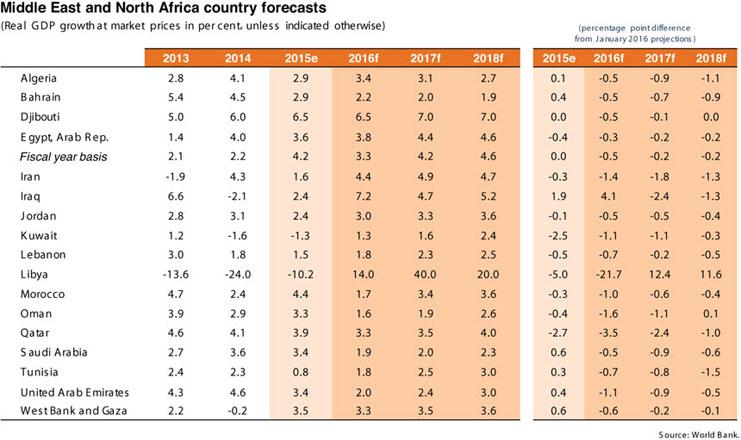You are here
World Bank cuts 2016 global growth forecast to 2.4 per cent
By JT - Jun 08,2016 - Last updated at Jun 08,2016

AMMAN — The World Bank (WB) is downgrading its 2016 global growth forecast to 2.4 per cent from the 2.9 per cent pace projected in January.
The move is due to sluggish growth in advanced economies, stubbornly low commodity prices, weak global trade and diminishing capital flows, according to a WB statement.
According to the latest update of its Global Economic Prospects report, commodity-exporting emerging market and developing economies have struggled to adapt to lower prices for oil and other key commodities, and this accounts for half of the downward revision.
Growth in these economies is projected to advance at a meager 0.4 per cent pace this year, a downward revision of 1.2 percentage points from the January outlook.
“This sluggish growth underscores why it’s critically important for countries to pursue policies that will boost economic growth and improve the lives of those living in extreme poverty,” said World Bank Group President Jim Yong Kim.
“Economic growth remains the most important driver of poverty reduction, and that’s why we’re very concerned that growth is slowing sharply in commodity-exporting developing countries due to depressed commodity prices.”
Commodity-importing emerging markets and developing economies have been more resilient than exporters, although the benefits of lower prices for energy and other commodities have been slow to materialise, according to the report.
These economies are forecast to expand at a 5.8 per cent rate in 2016, down modestly from the 5.9 per cent pace estimated for 2015, as low energy prices and the modest recovery in advanced economies support economic activity.
Among major emerging market economies, China is forecast to grow at 6.7 per cent in 2016 after 6.9 per cent last year. India’s robust economic expansion is expected to hold steady at 7.6 per cent, while Brazil and Russia are projected to remain in deeper recessions than forecast in January. South Africa is forecast to grow at a 0.6 per cent rate in 2016, 0.8 of a percentage point more slowly than the January forecast.
A significant increase in private sector credit — fueled by an era of low interest rates and, more recently, rising financing needs — raise potential risks for several emerging market and developing economies, the report revealed.
“As advanced economies struggle to gain traction, most economies in South and East Asia are growing solidly, as are commodity-importing emerging economies around the world,” World Bank Chief Economist and Senior Vice President Kaushik Basu said.
“However, one development that bears caution is the rapid rise of private debt in several emerging and developing economies. In the wake of a borrowing boom, it is not uncommon to find non-performing bank loans, as a share of gross loans, to quadruple.”
In an environment of anaemic growth, the global economy faces pronounced risks, including a further slowdown in major emerging markets, sharp changes in financial market sentiment, stagnation in advanced economies, a longer-than-expected period of low commodity prices, geopolitical risks in different parts of the world, and concerns about the effectiveness of monetary policy in spurring stronger growth.
Growth in the Middle East and North Africa region is forecast to pick up slightly to 2.9 per cent in 2016, 1.1 percentage points less than expected in the January outlook.
The downward revision comes as oil prices are expected to track lower for the year, at an average of $41 per barrel.
The main reason for the slight improvement in regional growth in 2016 is an expected strong recovery in Iran, following the lifting of sanctions in January.
An envisaged upturn in average oil prices in 2017 is projected to support a recovery in regional growth to 3.5 per cent in 2017.
Related Articles
AMMAN — The Department of Statistics (DoS) said the country’s gross domestic product recorded a growth of 2.3 per cent in fixed market price
PARIS — The Organisation for Economic Cooperation and Development (OECD) on Thursday lowered its expectations for global growth, saying it w
Growth in emerging markets will slow for a fifth consecutive year, the International Monetary Fund (IMF) said Tuesday, as exchange rate swings and oil prices plunge, and China’s economic growth slows.

















